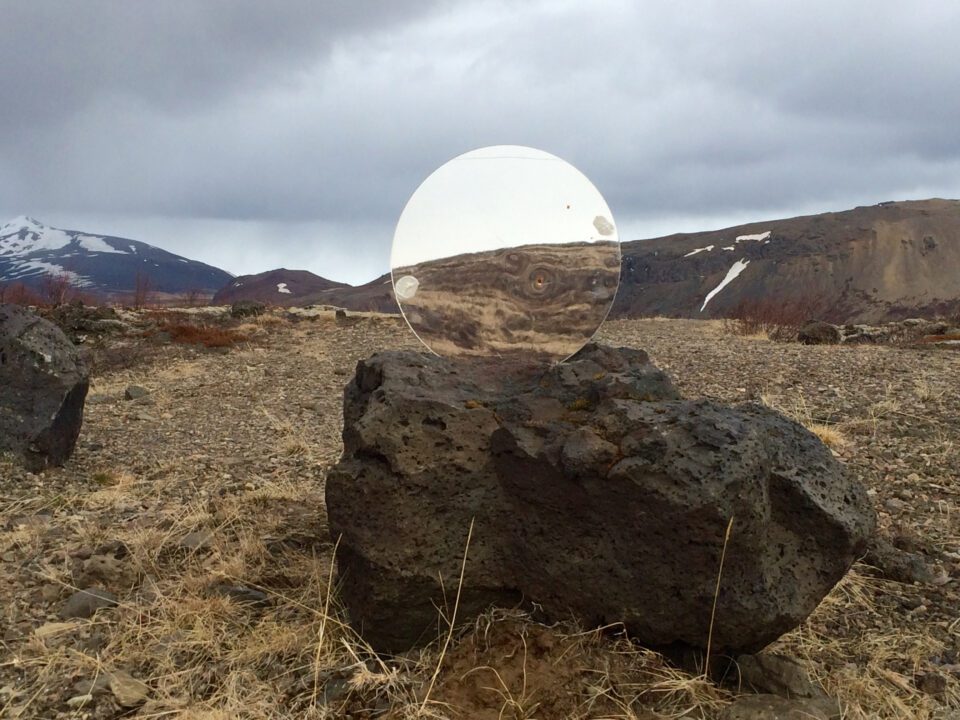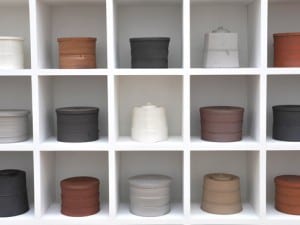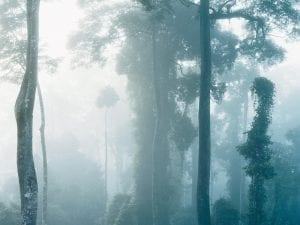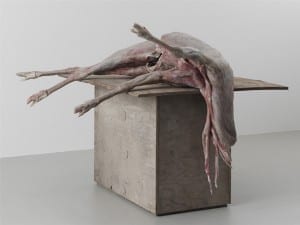Departing from his attraction to geomorphology, the new body of work of British artist Matt Gee juxtaposes nature and artifice as metaphors of socio-political parameters. Entitled Nutri-Artifice, the new exhibition presented at Gallery 286 embraces a conglomeration of sculptural works alongside a series of prints on aluminium (some of them rendered in 3D format) and C-type prints, all occupying the numerous gallery spaces. Experimenting with a wide span of mediums, such as found volcanic rocks, expanding foam and crystal chemicals, Gee engenders his very own “cabinet of curiosity”, disclosing connotations of an ecological and global socio-economic spirit. Surveying aspects of materialism and authenticity, the exhibition reflects a discourse of humanity and an idiosyncratic positioning from the perspective of the young artist. Kostas Prapoglou interviews Matt Gee for Aesthetica:
A: Your visual language embraces the notion of scientific research. Why have you chosen to engage with this domain?
MG: There are crossovers between science and art’s processes, investigation and discovery. Artists mix chemicals (crystal solutions and pigments in my case) aiming to produce a compound to discover desired outcomes, much like a scientific result, or “Eureka moment”, an exhibition is realised in both cases. My development is like a scientific pursuit, I feel the urge to explore surfaces and mediums to use processes of mimesis resulting in manmade materials appearing natural, or natural materials appearing manmade in order to deploy the dichotomy of synthetic vs. natural, with concepts of excess desire, pollution and exploitation of earth’s resources.
A: Geology plays a prominent role in your work. Does this derive from a pure artistic interest or is it an ongoing obsession?
MG: Both, as a conceptual motif and an obsessive collection of imitated crystal geode forms. Geode shells are mundane with the inside revealing sparkly crystalline innate beauty. For me, this is a metaphor of society with how beauty can lie within people even if society adopts stereotypical superficial views. How can one notice a geode amongst rubble when walking through a barren volcanic landscape? This element of discovery fascinates me as the keenest and most curious of connoisseurs is needed to discover the Geode amongst other rocks.
A: To what extent and why do you think a piece of stone can become an object of desire or even an object of worship?
MG: In Reyjkavik I went to a shop that sold lava, dense and glossy black, I later found it was called obsidian: a stone which forms when lava meets cold water, speeding up the cooling process. Then on the Fljotstunga Art Residency, Iceland, the geology was so incredible I even became obsessed with the gravel. Despite obsidian being common, I found the artificial quality exotic, a natural stone appearing like perspex (a material within my work), immaculately polished despite resting within rubble for hundreds of years. It was a hidden gem, no stereotypical qualities of beauty but still incredibly unique. It is also functional as it is used to make scalpels, and is second hardest to diamond.
A: Your work balances notions of the natural with the artificial. Is there a dialogue between the two or are they antithetic forces?
MG: I am presenting a dichotomy, however the Natural and Artificial can be entwined, even indistinguishable, which is the reason for the title Nutri-Artifice. Materials can be saturated to the point we lose track of ingredients, becoming an imitation of a supplement. Nutri implies wholesome, but can be power-bars, diet pills, monosodium glutamate, all escalators or artificial catalysts. Linking Nutri with Artifice implies that trickery or mimesis are presented, but then ramped up until we lose sight of what was natural. My 3D rock series shows reproductions of rocks on isolated backgrounds, transformed into 3D, presenting a virtual artificial reality of a reproduction. With Chrome Sun I wanted to demonstrate the possibility of the aesthetic of artificial objects having potential to seamlessly slot in with the natural environment. A circular acrylic mirror slots into a slot found on a lava rock, perfectly aligning a reflection of a mountain behind the gaze with mountains in front of the mirror.
A: How do you see your art evolving in terms of the utilisation and exploration of mediums?
MG: I use many mediums and processes, so Gallery 286 is suitable for this show as it consists of two contrasting spaces and corridors to utilise my varied practice. I am slowly turning away from being an artist and amateur scientist, into the world of lapidary as I explore processes of polishing stones to achieve desired effects. I am working with pigments to make objects glow in the dark or change colour when heated (thermal dust), I am interested in how the world perceives light pollution. In Iceland it wouldn’t get dark during spring, and although in London it gets dark it is never truly as dark as outside of the city. I am exploring ways of making installations consisting of sculptures glowing in the dark and creating a micro-environment for an assortment to glow away from the light-polluted city.
Matt Gee: Nutri-Artifice, until 27 August, Gallery 286, 286 Earl’s Court Road, London SW5 9AS.
Kostas Prapoglou
Follow us on Twitter @AestheticaMag for the latest news in contemporary art and culture.
Credits
1. Matt Gee, Chrome Sun, 2015. Courtesy of the artist and Gallery 268.





